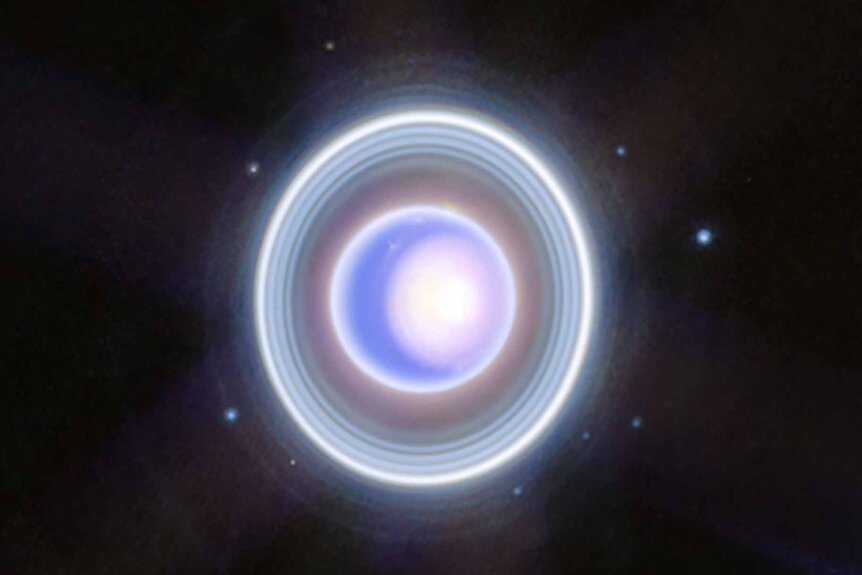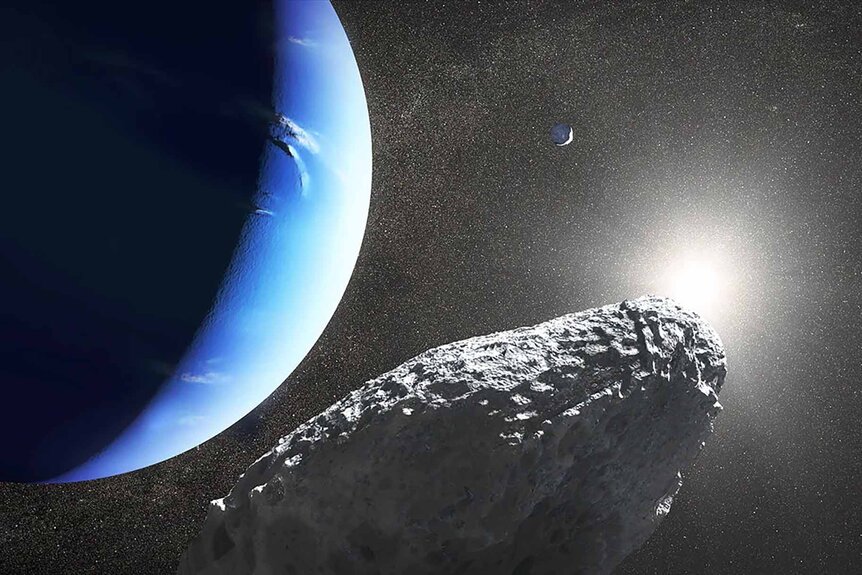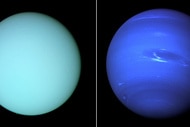Create a free profile to get unlimited access to exclusive videos, sweepstakes, and more!
New Moons! Three of the Solar System's Most Distant Moons Discovered Around Uranus and Neptune
Cutting edge astronomy for the win!

The worst part about being a werewolf (we suspect) is the loss of control. One day, you’re an ordinary person living out your life and the next day you’re an advice columnist living in the middle of nowhere, Australia, avoiding any interpersonal relationships because you become an uncontrollable beast when the Moon is full. Fortunately for Mary (Isla Fisher) and the rest of the gang in Wolf Like Me (streaming now on Peacock), the Earth only has one moon and, therefore, the full Moon only comes once a month, give or take.
For any werewolves unfortunate enough to live on our solar system’s outer ice giants, the situation just got a little bit more complicated with the discovery of three new distant moons orbiting Uranus and Neptune. Astronomers using ground-based telescopes in Hawaii and Chile recently confirmed the existence of two previously undiscovered moons around Neptune and one around Uranus. That brings their totals to 16 and 28, respectively.
For More on Moons:
A Double Moon Collision Could Have Formed Saturn’s Rings
Life Without Light: How Life Could Emerge on Moons Around Starless Rogue Planets
Earth Has Had a Second Moon (Sort of) for the Last Few Thousand Years
Astronomers Add Three New Moons to the Solar System’s Collection
“The three newly discovered moons are the faintest ever found around these two ice giant planets using ground-based telescopes. It took special image processing to reveal such faint objects,” said Carnegie Science’s Scott Sheppard, who led the discovery, in a statement.
Uranus’ new moon was first detected in November 2023 using Chile’s Magellan telescope. Sheppard followed up with additional observations the next month and also combed through historical images to find any accidental observations. The new moon is exceedingly small, only about 5 miles (8 kilometers) across, and it orbits once every 680 days. It has been given the temporary designation S/2023 U1 but will eventually be named for a character from Shakespeare just like other Uranian moons like Puck and Juliet.
The discovery of the two Neptunian moons took a similar path. One was discovered using Magellan, just like the Uranian moon, while the other was found thanks to the Subaru telescope in Hawaii. The brighter of the two Neptunian newbies is provisionally called S/2002 N5. It has an estimated diameter of 14 miles (23 kilometers) and orbits Neptune every 9 years. The fainter moon, dubbed S/2021 N1 is 8.6 miles (14 kilometers) across and orbits every 27 years. In fact, S/2021 N1 orbits farther from its planet and has the longest orbital period of any known moon in the solar system. Eventually, both moons will be given names taken from the Greek Nereid sea nymphs.
Observing distant moons, particularly faint ones, is no easy task. To tease their subtle signatures from the cosmic background noise, astronomers had to take many exposures over the course of hours and days, then stack them together to see what was there.
"Because the moons move in just a few minutes relative to the background stars and galaxies, single long exposures are not ideal for capturing deep images of moving objects. By layering these multiple exposures together, stars and galaxies appear with trails behind them, and objects in motion similar to the host planet will be seen as point sources, bringing the moons out from behind the background noise in the images," Sheppard said of the approach.
This comes on the heels of 12 new moons discovered around Jupiter just last year. As our astronomical techniques improve, the moon situation in the outer solar system is getting increasingly complex and that makes it an exciting time for discovery.
Howl at the moon(s) with Wolf Like Me, streaming now on Peacock.
























